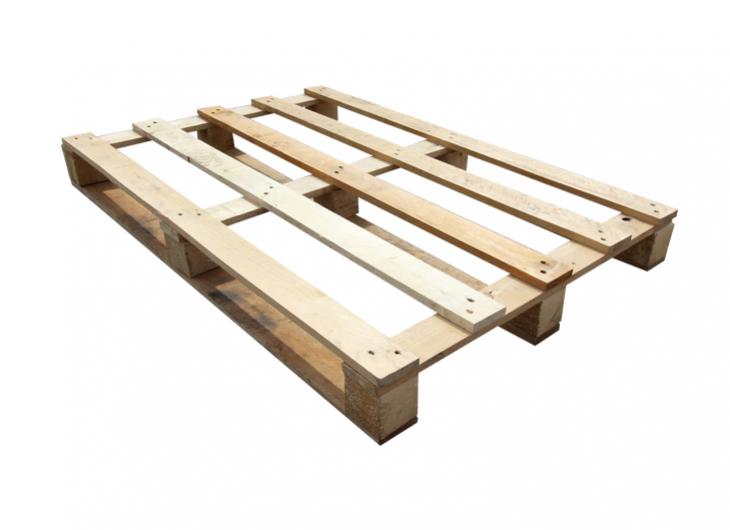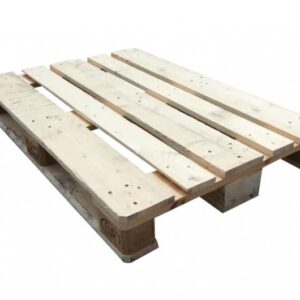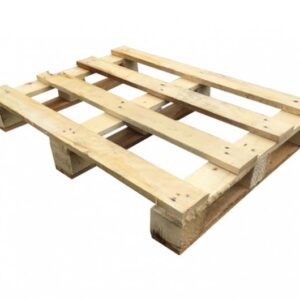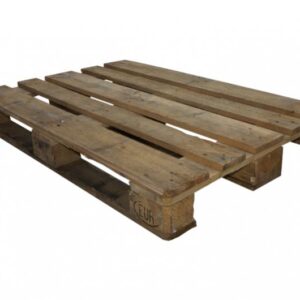Beyond the “B”: Unpacking the Value of Grade B Euro Pallets (1200 x 800 mm)
You’ve seen them. They’re the workhorses of logistics, the unsung heroes of shipping, and quite possibly the most ubiquitous wooden platform on the planet. We’re talking about Euro pallets, specifically the standard 1200 x 800 mm size. But what happens when a pallet isn’t factory-fresh? What does “Grade B” really signify, and why should you care?
If you’re involved in warehousing, e-commerce, agriculture, or practically any industry that moves goods, understanding pallet grades is key to optimizing your operations, stretching your budget, and even contributing to a more sustainable supply chain. Today, we’re diving deep into the world of Grade B Euro pallets, demystifying their characteristics, highlighting their advantages, and answering those burning questions you might have.
The Euro Pallet: A Standard for a Reason
Before we get into the “B,” let’s quickly reacquaint ourselves with the Euro pallet itself. This isn’t just any old wooden plank arrangement. The Euro pallet, or EUR pallet as it’s officially known, is a standardized design developed to facilitate efficient movement of goods across Europe and beyond. Its dimensions of 1200 x 800 mm are meticulously chosen for optimal fit on trucks, in warehouses, and within ISO containers. The robust construction, typically from coniferous or deciduous wood, is designed to withstand significant weight and repeated handling.
So, What Exactly is a “Grade B” Euro Pallet?
This is where things get interesting. Pallet grading systems aren’t always universally standardized across every single supplier, but generally, they aim to categorize pallets based on their condition and usability. Think of it like this:
- Grade A: These are your pristine, almost-new pallets. They’re typically lightly used, showing minimal wear and tear, with no significant damage. They’re clean, often heat-treated (essential for international shipping), and ready for immediate, high-visibility use.
- Grade B: This is our focus today. Grade B pallets are those that have seen some action but are still very much functional and reliable. They might show signs of wear, such as minor scuffs, scratches, or slight discoloration. Crucially, they will be structurally sound, meaning no broken boards, loose nails, or significant warping that would compromise their load-bearing capacity. They are perfectly capable of doing the job, just perhaps without the factory-fresh shine.
- Grade C: These are typically pallets that have seen extensive use and may have more visible damage, such as cracked or chipped boards, but are still repairable or suitable for certain less demanding applications.
Let’s visualize the difference:
| Feature | Grade A Euro Pallet | Grade B Euro Pallet |
|---|---|---|
| Appearance | Near-new, clean, minimal to no visible wear. | Used, may have minor scuffs, scratches, or slight discoloration. |
| Structural Integrity | Excellent, no damage. | Structurally sound, no broken boards, loose nails, or significant warping. |
| Repairs | Typically no repairs. | May have undergone minor, professional repairs (e.g., a replaced board). |
| Moisture Content | Generally low and consistent. | May have slightly higher or more varied moisture content, but within acceptable limits. |
| Nail condition | Flush or slightly proud. | Nails are generally secure, not excessively raised or loose. |
| Suitability | High-volume retail, export, visually sensitive goods, premium applications. | General warehousing, internal transit, storage, manufacturing, less visible applications. |
| Cost | Higher. | Lower, offering significant cost savings. |
Why Choose Grade B Euro Pallets? The Smart Business Move
Now that we know what a Grade B pallet is, let’s talk about why you might want to consider them. The answer, in a nutshell, is value.
- Significant Cost Savings: This is often the primary driver. Grade B pallets are considerably cheaper than their Grade A counterparts. For businesses that move large volumes of goods, this price difference can translate into substantial savings over time. Imagine buying hundreds or thousands of pallets – those savings really add up!
- Still Functionally Robust: Don’t let the “B” fool you into thinking they’re weak. A properly graded Grade B pallet is still a workhorse. It will reliably carry your products, withstand the rigors of forklifts, and endure transit without issue, provided it’s been graded correctly by a reputable supplier. Their structural integrity is paramount, and that’s what you should be looking for.
- Environmentally Conscious Choice: Opting for Grade B pallets is a fantastic way to embrace sustainability. These pallets have already been manufactured and have served a purpose. By giving them a second life, you’re reducing the demand for new timber, conserving resources, and diverting waste from landfill. It’s a tangible step towards a more circular economy within your logistics.
- Reduced Depreciation Concerns: If your goods are going to be processed or stored internally, or if the visual appearance of the pallet isn’t a major concern for your end customers, a Grade B pallet makes perfect sense. You avoid the anxiety of “damaging” a brand-new pallet during handling, knowing that its slightly less-than-perfect appearance is already accounted for.
- Availability: In many markets, Grade B pallets can be more readily available than Grade A pallets, especially if you’re looking for large quantities. This can be crucial for businesses with fluctuating demand or tight deadlines.
When Are Grade B Pallets the Perfect Fit?
While Grade B pallets are versatile, they truly shine in certain scenarios:
- Internal Warehousing and Storage: If your pallets are primarily moving within your own warehouse, being handled by your own staff, and not being shipped directly to a high-end retail display, Grade B is an excellent choice.
- Manufacturing Processes: For holding raw materials, intermediate goods, or finished products before they are packaged for shipment, the visual appeal of the pallet is irrelevant.
- E-commerce Fulfillment (Back-End): While you might want Grade A for your final customer delivery packaging, the internal movement and storage of products within your fulfillment center can easily be done with Grade B.
- Less Visually Sensitive Shipments: If the pallet is covered by shrink wrap or is not the primary selling point of your product, Grade B is a no-brainer.
- Budget-Conscious Businesses: Simply put, if you need to manage costs effectively without compromising on essential functionality, Grade B pallets are your allies.
Let’s consider a hypothetical scenario:
Imagine you run an online store selling artisanal pottery. You need pallets to store your inventory in your warehouse.
- Scenario 1 (Higher Cost): You opt for Grade A pallets for everything. This means your inventory sits on pristine pallets, but you’re paying a premium for that aesthetic. If a pallet gets a minor scuff during internal movement, you might feel a pang of regret.
- Scenario 2 (Smart Choice): You use Grade B pallets for your warehouse storage. They are structurally sound, keeping your precious pottery safe. The minor scuffs and discoloration are invisible once your inventory is stacked high. You save a significant amount of money on your pallet purchase, which can then be reinvested in marketing or product development. When it’s time to ship individual orders, you might use smaller, specialized packaging, or perhaps even a Grade A pallet if specifically required for a premium customer experience.
Finding the Right Supplier: Quality Matters, Even at Grade B
Just because you’re looking for Grade B doesn’t mean you should compromise on the supplier. A reputable pallet supplier will have a clear grading system and a quality control process in place. When choosing a supplier for your Grade B Euro pallets, consider:
- Their Grading Criteria: Do they clearly define what constitutes a Grade B pallet?
- Repair Standards: If repairs are made, are they done professionally and in a way that doesn’t compromise the pallet’s strength?
- Inspection Process: How do they ensure the pallets meet their Grade B specifications?
- Source of Pallets: Are they sourcing used pallets responsibly?
- Customer Reviews and Reputation: What do other businesses say about their quality and reliability?
A quick checklist for inspecting Grade B pallets yourself:
- Boards: Check for cracks, splits, or missing sections. Minor surface checking (small cracks on the surface) is usually acceptable, but through-and-through cracks are not.
- Blocks: Ensure the support blocks are intact and not severely damaged.
- Nails: All nails should be present and reasonably flush. Loose or protruding nails can be a safety hazard.
- Warping: While some slight warping might be present, significant bowing or twisting can affect stability.
- Cleanliness: While not pristine, they shouldn’t be excessively dirty, oily, or contaminated.
Frequently Asked Questions about Grade B Euro Pallets
We’ve covered a lot of ground, but you might still have a few lingering questions. Let’s tackle some common ones:
Q1: Are Grade B pallets safe for international shipping?
Generally, yes, provided they meet the IPPC (International Plant Protection Convention) standards for heat treatment (HT stamp) or fumigation (MB stamp). The grading refers to the cosmetic and minor structural condition, not necessarily the treatment required for international transit. Always confirm with your supplier and your shipping carrier that the pallets are compliant.
Q2: Can I get Grade B pallets with an EPAL or UIC stamp?
Yes! These stamps indicate that the pallet has been manufactured according to specific quality standards set by EPAL (European Pallet Association) or UIC (International Union of Railways). Pallets that have been repaired and re-certified to these standards can still fall into the Grade B category if they meet the aesthetic and minor damage criteria.
Q3: How much cheaper are Grade B pallets compared to Grade A?
The price difference can vary significantly depending on market demand, supplier, and quantity. However, you can typically expect Grade B pallets to be anywhere from 15% to 40% cheaper than Grade A pallets.
Q4: What if I receive Grade B pallets that are actually in poor condition?
This is where a good relationship with a reputable supplier is crucial. If you receive pallets that don’t meet the agreed-upon Grade B specifications, contact your supplier immediately. A reliable supplier will have a clear returns or exchange policy.
Q5: Can I repair my own Grade B pallets?
While you might be able to perform minor repairs, it’s generally recommended to purchase pallets that have already been inspected and graded by professionals. If your operation requires consistent quality and load-bearing capacity, professional grading and repair services are usually the best route.
In Conclusion: Embrace the Value of Grade B
The humble Euro pallet, in its Grade B form, is far more than just a “seconds” option. It’s a smart, economical, and sustainable choice that can significantly benefit your business operations. By understanding what Grade B signifies – functional strength with minor cosmetic imperfections – you can make informed purchasing decisions that optimize your budget and contribute to a more responsible supply chain.
So, the next time you’re sourcing pallets, don’t shy away from the “B.” Explore the value, understand the quality, and consider how Grade B Euro pallets can become a powerful asset in your logistical toolkit. Your bottom line, and the planet, will thank you for it!





Reviews
There are no reviews yet.